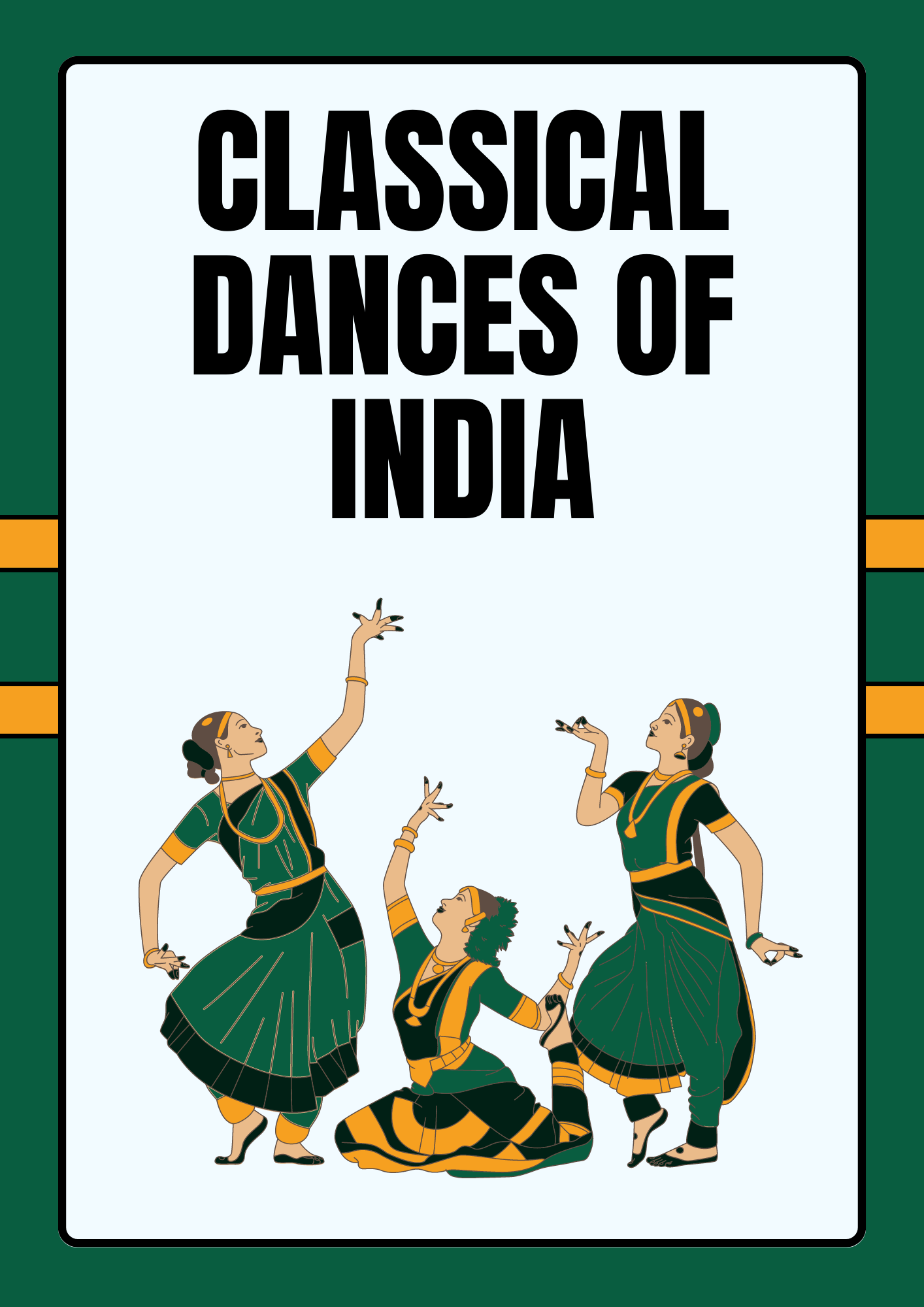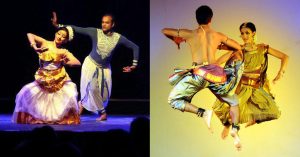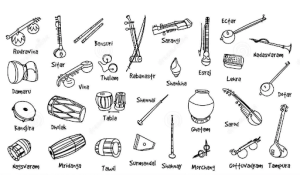
Classical Dances of India: Classical dances of India are an integral part of the country’s rich cultural heritage. These dances have a long history that dates back thousands of years and are deeply rooted in Indian mythology, religious traditions, and regional customs. They are considered to be expressions of devotion, storytelling, and aesthetic beauty.
India has several major classical dance forms, each with its own distinct style, technique, and repertoire. Let’s explore some of the prominent classical dances of India.
India is renowned for its rich cultural heritage, and a significant aspect of this heritage is its classical dances. The country boasts a diverse range of eight major classical dance forms, each originating from different regions and carrying its unique essence. The 8 classical dances of India, Bharatanatyam, Kathak, Odissi, Kathakali, Mohiniyattam, Manipuri, Kuchipudi, and Sattriya, are the epitomes of grace, storytelling, and devotion.
With intricate footwork, expressive gestures, elaborate costumes, and mesmerizing music, these dances encapsulate the depth of Indian mythology, religious traditions, and regional customs. Through their performances, these classical dances preserve and showcase the captivating beauty of India’s cultural tapestry, captivating audiences worldwide.
India’s classical dances embody the country’s rich cultural tapestry, enchanting audiences with their grace, storytelling, and devotion. The eight major classical dance forms – Bharatanatyam, Kathak, Odissi, Kathakali, Mohiniyattam, Manipuri, Kuchipudi, and Sattriya – each possesses a distinct character and origin.
|
Indian Classical Dances List |
||
| S.No | Name of Classical Dance | Place of Classical Dance |
| 1 | Bharatanatyam | Tamil Nadu |
| 2 | Kathak | Northern India |
| 3 | Kathakali | Kerala |
| 4 | Kuchipudi | Andhra Pradesh |
| 5 | Manipuri | Manipur |
| 6 | Mohiniyattam | Kerala |
| 7 | Odissi | Odisha |
| 8 | Sattriya | Assam |
Each classical dance form has its own unique style, costumes, music, and regional variations, reflecting the diverse cultural traditions of different parts of the country. The classical dances of India not only showcase artistic and aesthetic beauty but also serve as a means of preserving and passing on the country’s cultural heritage from one generation to another.
|
Significance of Famous Dance Forms of India |
|
| Dance Forms | Significance |
| Bharatanatyam |
|
| Kathak |
|
| Kathakali |
|
| Kuchipudi |
|
| Manipuri |
|
| Mohiniyattam |
|
| Odissi |
|
| Sattriya |
|

In classical dance, particularly in the context of Bharatanatyam and some other Indian dance forms, the two basic aspects of classical dances of India are Lasya and Tandava. These aspects represent the contrasting energies and expressions within the dance form. Here are the explanations:
Lasya: Lasya embodies classical dance’s feminine, graceful, and delicate aspects. It represents beauty, charm, and abhinaya (expressional aspects). Lasya movements are characterized by fluidity, softness, and gentle expressions. It showcases the subtleties of emotions, love, devotion, and the lyrical aspects of the dance. Lasya is often associated with goddesses, heroines, and feminine characters in dance narratives.
Tandava: Tandava represents classical dance’s masculine, vigorous, and powerful aspects. It is characterized by dynamic movements, strong footwork, and energetic expressions. Tandava movements convey a sense of strength, power, and rhythmic precision. It symbolizes the cosmic dance of Lord Shiva and embodies the essence of creation, destruction, and the rhythmic cycles of life. Tandava movements often involve quick footwork, forceful gestures, and striking poses.
Together, Lasya and Tandava represent the harmonious balance of the feminine and masculine energies in classical dance, adding depth and variety to the performance. The dancer transitions between these aspects, expressing different emotions, characters, and themes, creating a captivating and vibrant portrayal on the stage.
The table below presents key facts related to the aspects of Classical Dance:
|
Indian Classical Dances Facts |
|
| What are the two basic aspects of Classical Dance? | There are two basic aspects of Natya Shastra:
|
| What is Lasya? | Lasya embodies classical dance’s feminine, graceful, and delicate aspects. It represents beauty, charm, and abhinaya (expressional aspects). |
| What is Tandava? | Tandava represents classical dance’s masculine, vigorous, and powerful aspects. It is characterized by dynamic movements, strong footwork, and energetic expressions. |
| What are the three basic elements of a classical dance act? | The three basic elements of a classical dance act are Nritta, Natya, and Nritya:
These three elements together form the foundation of classical dance, allowing dancers to express themselves through the beauty of movement, the power of storytelling, and the evocation of emotions, resulting in a comprehensive and captivating dance performance. |
| What is Guru-Shishya Paramapara? | Guru-Shishya Parampara in classical dance refers to the traditional system where the knowledge, techniques, and artistry of the dance form are imparted from a Guru (master) to the Shishya (disciple), fostering a close mentor-student relationship and ensuring the preservation and continuity of the dance tradition. |
The 9 Rasas, also known as the Navarasas, are integral to classical dance and Indian aesthetics. Each Rasa represents a specific emotion or sentiment that can be expressed through facial expressions, body movements, and gestures. The 9 Rasas include Shringara (love), Hasya (laughter), Karuna (compassion), Raudra (anger), Veera (courage), Bhayanaka (fear), Bibhatsa (disgust), Adbhuta (wonder), and Shanta (peace). By skillfully evoking these Rasas, classical dancers bring depth, emotional resonance, and a powerful connection to their performances, captivating audiences and allowing them to experience the full spectrum of human emotions.
|
Classical Dance – 9 Rasas/ Navarasas |
|
| Rasas | Attributes |
| Srinagar | Love |
| Raudra | Anger |
| Bibhatsa | Disgust |
| Veera | Heroism |
| Shanta | Peace and Tranquility |
| Hasya | Laughter and Comedy |
| Karuna | Compassion |
| Bhayanak | Fear |
| Adbhuta | Wonder |

Classical dances of India are often accompanied by a wide range of musical instruments, enhancing the performances and creating a harmonious blend of rhythm, melody, and movement. These instruments play a crucial role in providing the musical framework and accompanying the dancers. Here is a brief introduction to some of the instruments used in classical dances of India:
| Name | Origin State | Performance Type | Instruments |
| Bharatanatyam | Tamil Nadu | Devotional dance form | Cymbals, Violin, Veena, Flute, Tanpura as well as Mridangam, etc. |
| Kathak | Uttar Pradesh | Storytelling as well as narration | Manjira, Sarangi, Harmonium, Tabla, etc. |
| Odissi | Odisha | Temple dance | Sitar, Violin, Cymbals, Mandala, Flute, Harmonium, etc. |
| Manipuri | Manipur | Religious dance | Pung (Manipuri classical drum), Pena, Cymbals etc |
| Mohiniyattam | Kerala | Dance of the enchantress | Idakka, Mridangam, Flute, Veena, Khuzitalam (Cymbals) etc |
| Kuchipudi | West Bengal | Temple dance | Tambura, Mridangam, Flute, Veena, Cymbals |
| Kathakali | Kerala | Drama dance | Maddalam, Chenda, Idakka |
| Sattriya | Assam | Ballad, dance and drama | Shakha (Conch), Harmonium, Tanpura, Violin, Khol, Bahi |
The Sangeet Natak Akademi, India’s National Academy, officially recognizes eight classical dances of India. However, the Ministry of Culture also considers Chhau Dance as a classical dance, meaning there are nine classical dances in India.
Facts about Chhau Dance:
India has been blessed with numerous renowned classical dancers who have made significant contributions to the world of performing arts. These dancers have not only mastered their respective dance forms but have also become cultural ambassadors, promoting and preserving India’s rich artistic heritage. Here is a brief introduction to a few famous classical dancers in India:
|
Famous Classical Dancers in India |
|
| Famous Dancers | Dance Forms |
| 1. Rukmini Devi Arundale | Bharatnatyam |
| 2. Pandit Birju Maharaj | Kathak` |
| 3. Uday Shankar | Fusion |
| 4. Kelucharan Mohapatra | Odissi |
| 5. Guru Bipin Singh | Manipuri |
| 6. Guru Vempati Chinna Satyam | Kuchipudi |
| 7. Padma Subrahmanyam | Bharatnatyam |
| 8. Shovana Narayan | Kathak |
| 9. Sonal Mansingh | Bharatnatyam & Odissi |
| 10. Srimanta Sankardev | Sattriya |
Classical Dances of India pdf: Download the PDF Here
Q1. What is the name of Indian 8 classical dance?
Ans: The eight major classical dance forms – Bharatanatyam, Kathak, Odissi, Kathakali, Mohiniyattam, Manipuri, Kuchipudi, and Sattriya.
Q2. How many Indian classical dance forms are there in total?
Ans: According to experts, there are originally 8 classical dance forms in India. However, the Indian Cultural Ministry has added Chhau Dance to the list, making it a total of 9 classical dance forms in India.
Q3. Which dance form has 64 principles?
Ans: In Bharatanatyam, there are 64 principles that guide the coordination of hand, leg, face, and body movements. These principles are learned and practiced during dance training to perform the dance steps effectively.
Q4. Which is the oldest dance form in India?
Ans: The oldest dance form in India is believed to be Bharatanatyam. It has its roots in the ancient temples of Tamil Nadu and has been practiced for centuries, making it one of the oldest classical dance forms in the country. It was earlier known as Sadiraattam and was renamed Bharatanatyam in 1932.
Q5. Which is the most famous classical dance form?
Ans: Bharatanatyam, often considered the mother of all classical dance styles, is regarded as one of India’s oldest and most famous dance forms. It originated in Tamil Nadu from the temple dancers and carries a rich cultural heritage that dates back centuries.

<div class="new-fform">
</div>